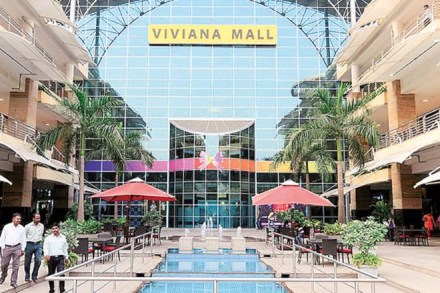Despite online retail shaving off significant same store sales (SSS) growth from its offline rivals, international private equity (PE) funds currently prefer to invest in malls over dipping their toes in office blocks, “Emerging Trends 2018”, a report released by consulting firm PwC India on Monday, said. As PE players have rushed in to take positions in different income generating asset classes over the last three to four years, it is the logistics sector, which feels like a gold rush at the moment. That piece of the income generating segment has attracted $2.5 billion in just the last six months. Capitalisation (cap) rates for these assets are in the range of 9-10%, the report said. In comparison, cap rates are currently averaging 8.5% to 8.75% in commercial offices. Cap rates indicate the potential for returns on a real estate asset, the higher the rate, the higher the potential.
In comparison, cap rates in the retail (mall) segment have been lower. For instance, CPPIB’s deal with Phoenix Mills earlier this year was sealed at 6%. GIC invested in Mumbai’s Viviana Mall at approximately 7% yield, according to people in the know. One reason is that the number of good quality malls are too few and far between. However, the report pointed out that retail investments are seeing greater traction compared to office assets, which are witnessing saturation. Retail is now offering good opportunities, both in terms of asset quality and rents, providing investors attractive growth prospects. In most of the retail malls countrywide, said the PwC report, the average appreciation in rentals has been anything between 8% and 10% per annum, as compared to the office space, where rents have been more or less steady, growing between 5% and 7% a year.
The report also pointed out that investments by limited partners (LPs) through large private equity and wealth funds are on the decline, with the larger LPs looking to invest big sums on their own. One fund manager observed that there exists a real gap between large LPs, which are comfortable going alone, and LPs that have traditionally backed funds. “It is probably the market where we see the largest gap between registering interest and actually doing something. So there is a significant amount of tire kicking going on,” the fund managed said. The trend is reflected in the diminishing instances of what are called co-mingled funds – corpus in which no partner contributes more than 10%. Instead, a large number of “managed accounts” have sprung up, wherein one or two major investors shoulder as much as 30% or more of the corpus. So while institutional players such as Blackstone, CPPIB, QIA and APG have on ground teams, evaluating and investing large sums, smaller funds have struggled to raise foreign money. Some like IDFC have put plans off for a better time. Among those that have managed, such as Hines and Kotak, the corpus has pretty much been bank-rolled by one single investor, ADIA. While discussing investments mainly in the commercial segment, the report said residential space continues to suffer in short term. It suggested that the high residential oversupply was leading to most foreign investors staying away from the segment.
